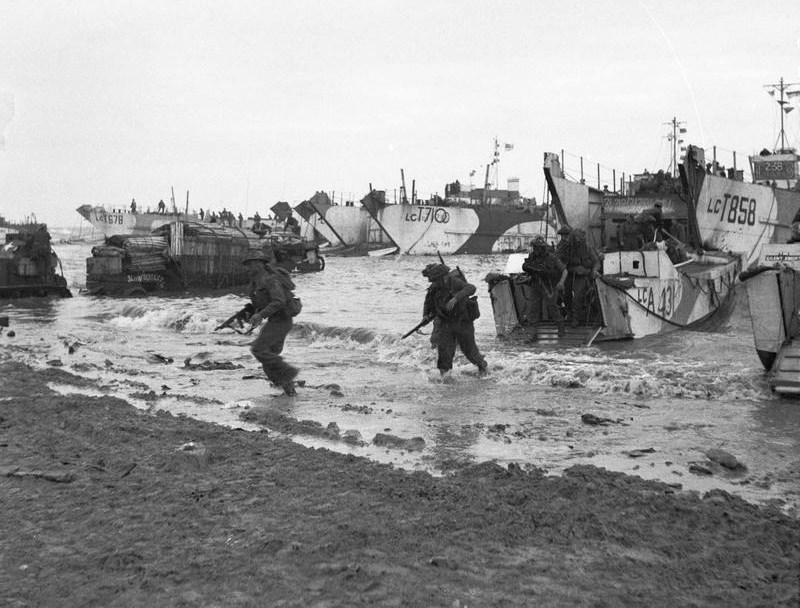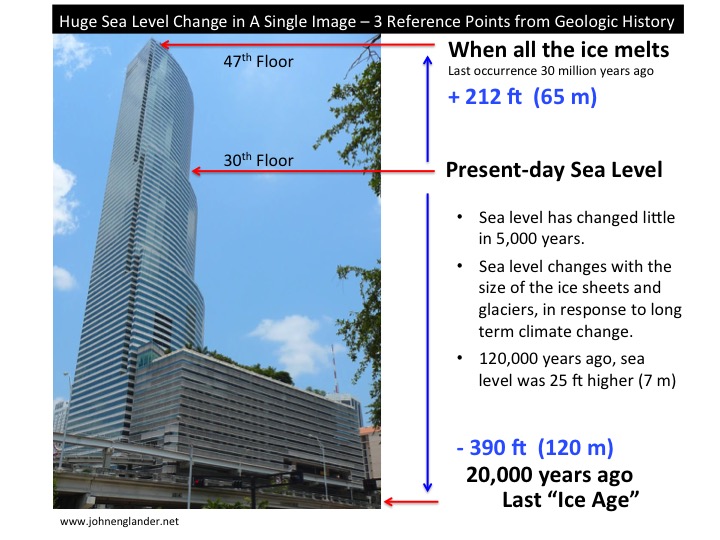Normandy Beach Will Need To Be Remembered Too

Memorial Day remembers those who died in the US Armed Forces, such as the infamous D-Day shown here on Normandy Beach. Decades from now, the beach itself will be a distant memory.
Monday is Memorial Day in the United States, a sacred day to remember the ultimate sacrifice of more than one million men and women who died serving in the armed forces. (Not to be confused with Veterans Day, honoring all those who served.)
As I looked at the image above from the famous D-Day invasion on the beaches of Normandy on June 6, 1944 an ironic thought occurred to me. Without detracting anything from the somber remembrance of the people landing on the shore there in the second world war, or similar shoreline scenes from other wars, there was something else that we will need to memorialize. The beaches themselves. They are headed for their own watery grave.
For about five thousand years, the shoreline has been in roughly the same location. We treat it as if it’s permanent. Of course, sea level determines where the shoreline is. Below is the graphic that I use in presentations and workshops to illustrate how sea level changes vertically, using the 30th floor as the equivalent of present day sea level. With that as a reference point, 20,000 years ago, sea level was almost four hundred feet lower, during the last ice age maximum glacial period, with vast amounts of water stored in ice sheets miles thick. As they melted over some fifteen thousand years, sea level rose to the present height.
But sea level also has been higher. For example during the last warm point in the cycle, about 120,000 years ago, sea level was at the equivalent of the 32nd floor, some twenty five feet (7 m) higher than now.
The last time the planet was ice free was about thirty million years ago. Sea level was hundreds of feet higher then. If we allow all the ice on the planet to melt, from the increased warming, sea level would reach another 212 feet (65 m) higher than present, or the equivalent of the top of this building, 17 floors above the present sea level. That would put not only Normandy Beach underwater, but essentially all present-day coastal areas.
As I showed with the graph a few weeks ago, for millions of years, climate change was a natural phenomenon, characterized by the “ice ages.” Now we are in a new era, triggered by the dramatic rise in carbon dioxide and other greenhouse gases. “Single Image Proves Human Caused Warming” Now the ice is melting and sea level is rising hundreds of times faster than during the natural cycles. Compared to geologic history, we are moving at warp speed.
It is urgent that we 1) try to slow the warming by reducing fossil fuels emissions, the “greenhouse gases”, and 2) that we prepare for rising sea level, some of which is now inevitable. We have passed the tipping point. To use the ship metaphor, even if the propellers are put “in reverse” it takes a while to the stop forward motion. The sooner we work to limit the warming, the better. The recent “Paris Climate Agreement” is an important effort towards that goal.
Regardless, in the later half of this century, it will be common to hear accounts remembering where the shoreline or a particular beach had been. Without distracting us from this annual day to remember those who sacrificed to defend our freedoms, it could be said that our big future “war” or battle will be with the sea itself.
NOTE: You may download the graphic and use it freely per the Creative Commons.

